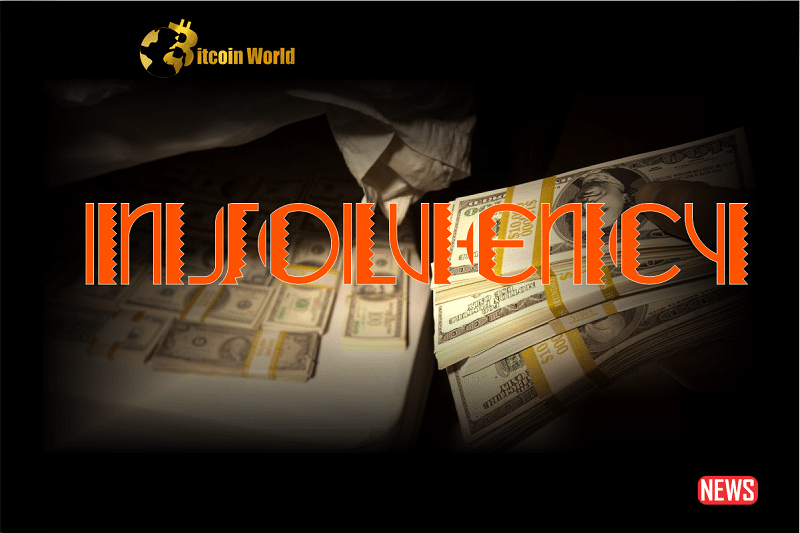Are we on the brink of another financial earthquake? Whispers of banking troubles are growing louder, and this time, it’s not just about a few isolated incidents. Recent reports suggest a significant portion of the US banking sector is feeling the heat, raising concerns reminiscent of the 2008 crisis. Let’s dive into what’s happening and what it could mean for you.
The Cracks Are Showing: What’s Happening in US Banking?
According to a recent report by the UK’s Telegraph, a concerning number of US banks – nearly half of the 4,800 institutions – are “burning through their capital buffers.” This alarming statistic coincides with a dip in American bank stock prices, particularly following the federal authorities’ takeover of First Republic Bank on May 1st. The majority of First Republic’s assets and deposits are now under the umbrella of JP Morgan Chase, the largest bank in the United States. But is this an isolated incident, or a symptom of a larger problem?
The Perfect Storm: Uninsured Deposits and Market Turmoil
Experts point to a confluence of factors contributing to this pressure. The bond market and the struggling commercial real estate sector are colliding with a massive $9 trillion in uninsured deposits within the American banking system. Think of it like this:
- Bond Market Volatility: Fluctuations in bond values can impact banks’ asset portfolios.
- Commercial Real Estate Strain: Challenges in the commercial real estate market can lead to loan defaults, affecting bank stability.
- Uninsured Deposit Vulnerability: Large amounts of uninsured deposits make banks more susceptible to bank runs if confidence erodes.
Expert Insights: Are We Underestimating the Problem?
Professor Amit Seru, a banking expert from Stanford University, paints a stark picture. He suggests that the issues extend far beyond Silicon Valley Bank and First Republic, stating, “Let’s not pretend that this is only about Silicon Valley Bank and the First Republic. A sizable portion of the US financial sector may be bankrupt.” His research from April indicates that over 2,315 banks currently hold assets worth less than their liabilities. This means the true market value of assets within the US banking system could be a staggering $2.2 trillion lower than their book value, which often doesn’t fully account for loans held to maturity.
Who’s Feeling the Pinch? Even the Big Players
The concern isn’t limited to smaller regional banks. Professor Seru’s study includes some of the biggest lenders in the US, even mentioning a “globally systemic entity with assets of over $1 trillion.” This highlights the potential for widespread impact. Furthermore, the full consequences of the Federal Reserve’s monetary tightening are yet to be felt. Consider the massive $31.7 trillion in total US debt – this financial pressure cooker could further exacerbate the situation.
Echoes of 2008: Could This Spark Another Crisis?
The recent bank collapses are undeniably stirring memories of the 2008 global financial crisis. Interestingly, that crisis inadvertently gave rise to Bitcoin. Now, some speculate that cryptocurrency could be a potential lifeline in the face of a new banking catastrophe.
Crypto’s Role: A Safe Haven or a Target?
As traditional bank stocks have stumbled, crypto markets have shown modest recovery. The total market capitalization has seen an increase, suggesting a potential shift in investor sentiment. However, despite recent gains, major cryptocurrencies like Bitcoin (BTC) and Ethereum (ETH) have been in a downtrend since mid-April. While trust in traditional banks appears to be waning again, the lessons from past financial crises don’t seem to have been fully absorbed. Could Bitcoin offer a solution this time? Perhaps. But the apparent determination of American financial officials to “crush” the cryptocurrency market suggests they might already be aware of its potential.
Key Takeaways and What to Watch For:
- Widespread Vulnerability: The issues within the US banking system may be more pervasive than initially thought, impacting a significant number of institutions.
- Economic Headwinds: The combination of bond market instability, commercial real estate challenges, and high levels of uninsured deposits creates a volatile environment.
- Systemic Risk: Even major banks are potentially exposed, raising concerns about broader financial stability.
- Monetary Policy Impact: The full effects of the Federal Reserve’s tightening policies are still unfolding.
- The Crypto Factor: Cryptocurrencies could play an increasingly important role as an alternative asset class if confidence in traditional banking continues to erode.
Looking Ahead: Navigating the Uncertainty
The current situation in the US banking sector warrants close attention. While the full extent of the challenges remains to be seen, the warning signs are there. Understanding the underlying factors and potential consequences is crucial for investors and individuals alike. Keep an eye on further developments in bank stock performance, regulatory responses, and the evolving role of alternative financial solutions like cryptocurrencies. Will history repeat itself, or can the system navigate these turbulent waters? Only time will tell.
Disclaimer: The information provided is not trading advice, Bitcoinworld.co.in holds no liability for any investments made based on the information provided on this page. We strongly recommend independent research and/or consultation with a qualified professional before making any investment decisions.


